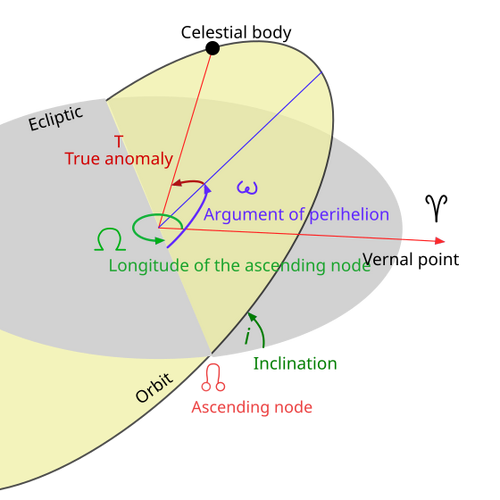The argument of periapsis (ω) is the orbital element describing the angle of an orbiting body's periapsis (the point of closest approach to the central body), relative to its ascending node (the point where the body crosses the plane of reference from South to North). The angle is measured in the orbital plane and in the direction of motion. (For specific types of orbits, words such as "perihelion" (for Sun-centered orbits), "perigee" (for Earth-centered orbits), "pericenter" (general), etc. may replace the word "periapsis". See apsis for more information.)
An argument of periapsis of 0° means that the orbiting body will be at its closest approach to the central body at the same moment that it crosses the plane of reference from South to North. An argument of periapsis of 90° means that the orbiting body will reach periapsis at its northmost distance from the plane of reference.
Adding the argument of periapsis to the longitude of the ascending node gives the longitude of the periapsis.

Fig. 1: Diagram of orbital elements, including the argument of periapsis (ω).
Calculation[]
In astrodynamics the argument of periapsis can be calculated as follows:
- (if then )
where:
- is the vector pointing towards the ascending node (i.e. the z-component of is zero),
- is the eccentricity vector (the vector pointing towards the periapsis).
In the case of equatorial orbits, though the argument is strictly undefined, it is often assumed that:
where:
- is x-component of the eccentricity vector .
In the case of circular orbits it is often assumed that the periapsis is placed at the ascending node and therefore .
Template:Orbits









